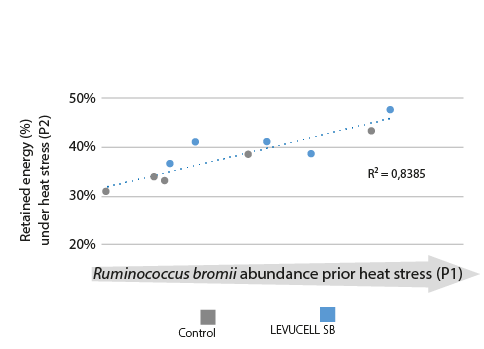Blog | Reading Time 1 minuta
Expert’s view: Caroline Achard about the impact of heat stress on pig microbiota
Caroline Achard, Ph.D., Research Scientist at the Lallemand Monogastric Center of Excellence
Is there a clear relationship between the microbiota profile and the animal’s response to heat stress? How can this be interpreted?
In our study, we demonstrated that heat stress modulated the gut microbiota composition in pigs. Heat stressed pigs notably showed increased levels of Clostridium sensu stricto group, Romboutsia and Ruminococcaceae taxa compared to the thermoneutral period. We hypothesize that these changes are likely to be involved in deleterious consequences on pig performance.
What was the effect of the live yeast Saccharomyces cerevisiae boulardii CNCM I-1079 supplementation at the microbiota level in the heat stress model?
The probiotic supplementation attenuated some of the deleterious effects of heat stress while it increased the abundance of some beneficial bacteria such as Lactococcus lactis and Subdoligranulum genera. L. lactis may beneficially interact with the host’s immune system.
Could we link this shift in microbiota profile to the observed physiological response of the pigs?
Interestingly, higher levels of Lactococcus lactis were indeed positively correlated with better dry matter intake and energy retention during heat stress, which translated into preserved performance. Moreover, higher levels of Ruminococcus bromii before heat stress are correlated with higher dry matter intake and energy retention during heat stress (Figure 1). Thus, this keystone species promoting the growth of other microorganisms able to degrade resistant starch, helps the pigs cope with a heat stress challenge.

Figure 1: Correlation between the microbiota composition prior to heat stress and energy retention during heat stress
Published Aug 12, 2022 | Updated Jun 1, 2023